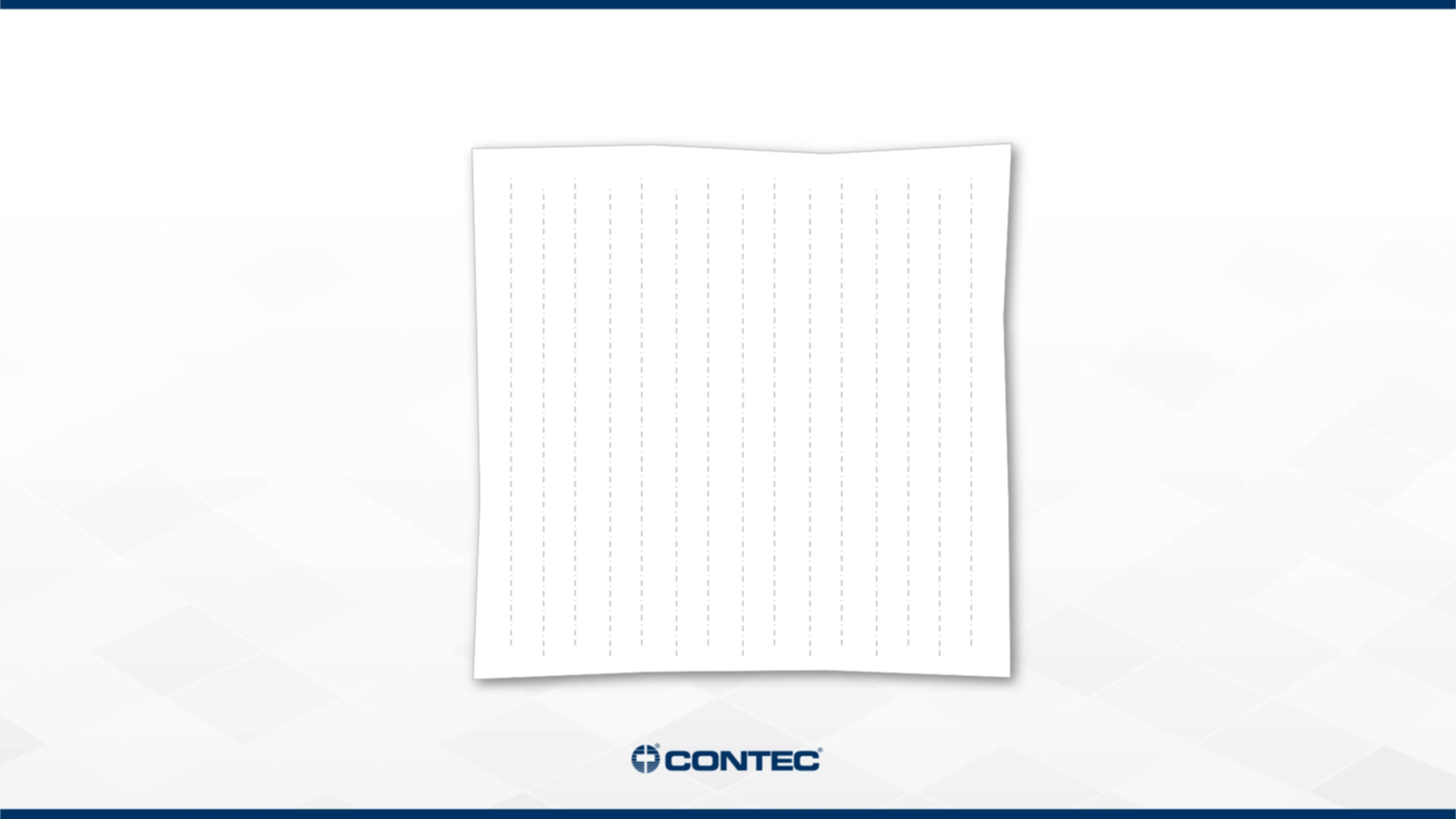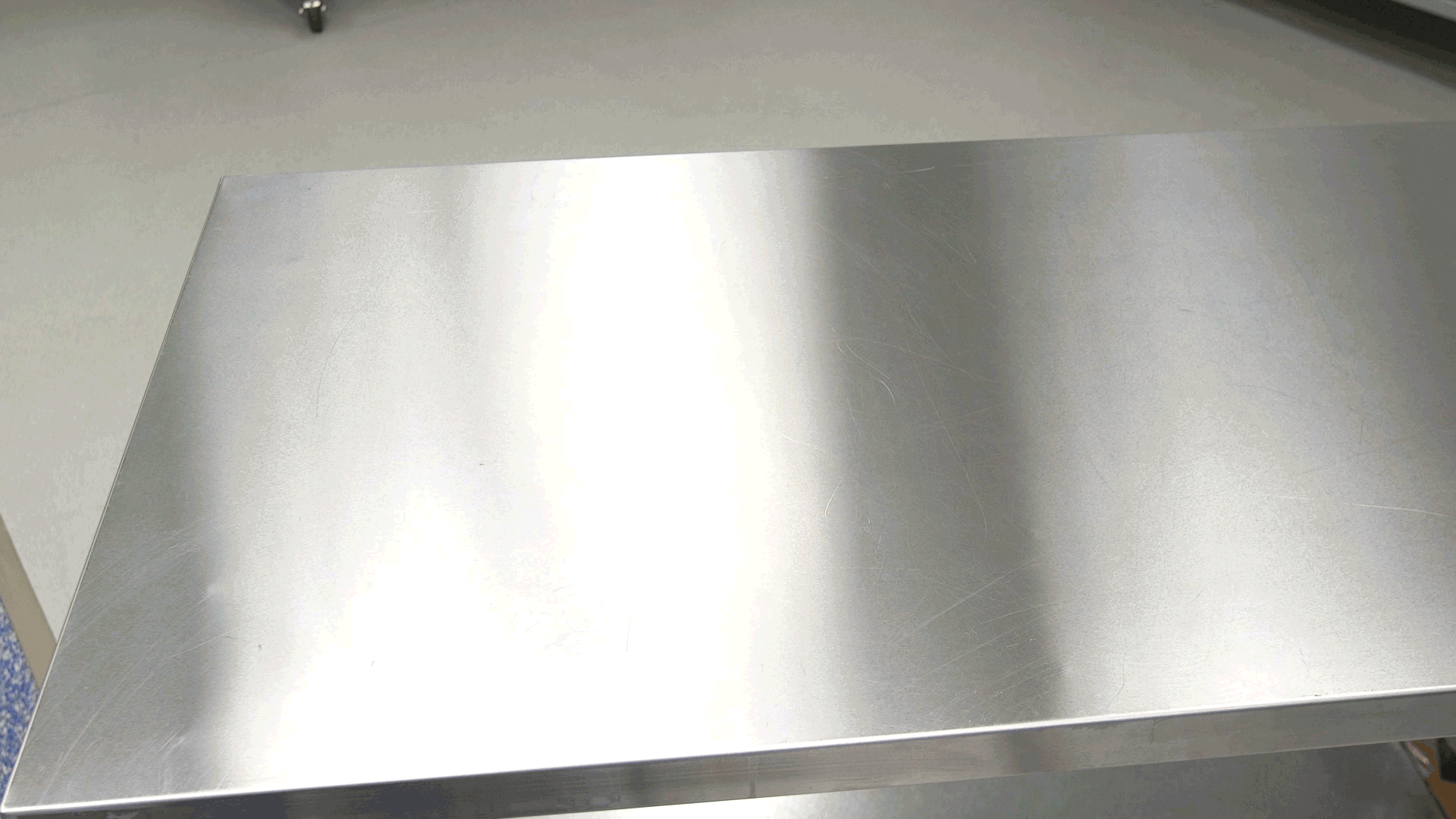Proper Cleanroom Wiping Techniques
In cleanrooms and other critical environments, it’s important to understand the role that proper wiping technique plays in reliable and consistent contamination control. When cleaning contamination you cannot see, technique is a sure way to know you’ve covered the surface area in question.
Sometimes operators will take a wipe out of a package and wipe surfaces in a circular or random pattern. This may look like the surface is getting clean but is actually ineffective - the contaminants are simply moved about, but not reliably removed from the surface being wiped. A more disciplined wiping approach, including a pull-and-lift technique, reliably removes contaminants from the entire wiped surface.
One of the keys to contamination removal is the use of a clean, unused wipe surface for each wiping pass. This is accomplished by quarter-folding the wipe, which creates four fresh surfaces and improved surface contact for each wipe pass. It is often asked why all eight panels of a quarter-folded wipe might not be used. While possible to do, it is riskier, as it is easy to lose track of which panel of the wipe is which, due to inattention and distractions. Quarter-folding the wipe using four surfaces per wipe allows the operator to ensure a clean wipe pass each time.
The Proper Way to Quarter-Fold a Wipe
The proper way to quarter-fold a wipe is to remove the wipe from its package, and unfold the wipe completely if necessary so the wipe is fully open and flat. Fold the wipe in half, and then in half again, so it is one-quarter its original size.

When preparing to wipe a surface with a quarter-folded wipe, the wipe should be held with the open (unfolded) edges away from the surface being cleaned. Only the folded edges and the face of the wipe should touch the surface, as folded edges are less likely to have loose particles or fibers, and the face of the wipe captures maximum contaminants.
What is the Proper Wiping Technique?
When wiping a flat surface, make sure to make parallel, slightly overlapping passes, lifting at the end of each pass in a somewhat rolling motion. This is referred to as the pull-and-lift technique. The reason for this is that as the wipe is lifted, contaminants are more reliably removed from the surface as opposed to simply pushing them to a stopping point.

After the first wiping pass, the wipe is simply turned over, using the opposite side of the quarter-folded wipe for the second pass. After the second pass, the wipe is re-folded to expose a fresh surface for the third wiping pass, then flipped again for the fourth pass. The pull-and-lift technique should be used at the end of each pass. Always ensure to keep the folded edges of the wipe touching the surface as each fresh side of the wipe is used.
When the wipe has been used for four passes, discard the wipe. If there is more surface to be cleaned, remove another wipe from the package and follow the same process and techniques.
How to Wipe Irregular Surfaces
There are various surfaces and features in a cleanroom that must be wiped, but pose a challenge to consistent wiping technique. These features include door handles and pulls, automatic closers, light switches, piping, fittings, and valves, to name some of the more common features. The key to effectively cleaning these features is making good surface contact. When cleaning an irregular surface, it is often useful to clean a few inches around it of the surrounding area. This is greatly reduces the need to clean so close to these difficult features when cleaning the surrounding surfaces such as by mopping.
As always, be sure to follow your site’s SOPs.
If you are unsure of your processes, Contec can schedule a virtual training or a Contamination Control Assessment to assist you further.
